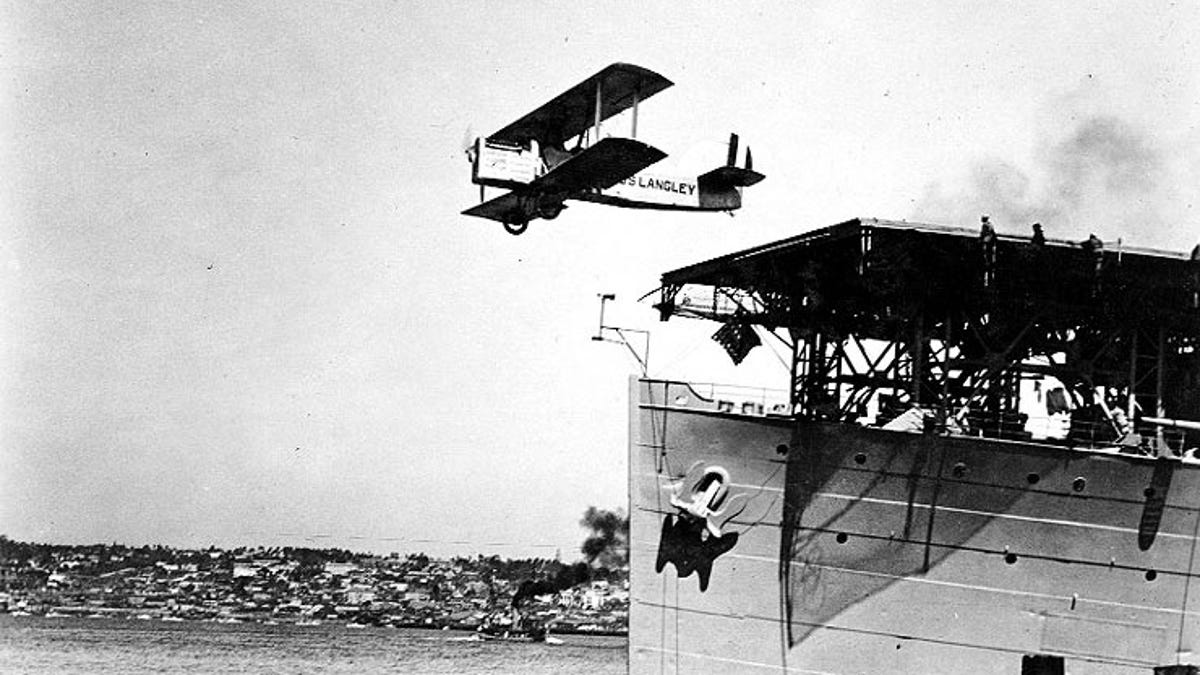The USS Langley and the dawn of the aircraft carrier
In March 1922, the U.S. Navy launched a bold experiment that really took off. Behold its first-ever aircraft carrier.

The very first aircraft carrier in the U.S. Navy wasn't even an aircraft carrier at first. Instead, it was toting coal and cargo.
This week marks 90 years since the USS Langley was commissioned and helped set in motion a whole new class of naval vessels and a new era of naval warfare. The mission was experimentation -- how best to have aircraft take off from and land on a tiny airstrip that doesn't hold still.
In the 1920s, "Langley was the platform from which Naval Aviators, guided by Captain Joseph M. Reeves, undertook the development of carrier operating techniques and tactics that were essential to victory in World War II," writes the U.S. Naval Historical Center.
The ship itself was an innovation, too, born of retrofitting. The Langley wasn't built from scratch as a carrier. No, it was converted from, of all things, a collier -- a ship tasked with the unglamorous job of carrying coal and other cargo. In that first life, the ship was known as the USS Jupiter, which, in its own humble way, was an innovator as well, according to the Naval Historical Center: "The Navy's first surface ship propelled by electric motors, she was an engineering prototype for the turbo-electric propulsion system widely used in Navy capital ships" over the next two decades.
Nowadays, of course, we've got ever newer generations of technology making their way into and onto aircraft carriers.
Starting at the top of the food chain, there's this: the USS Gerald R. Ford, not only a brand-new carrier expected to be ready in 2015 (a dozen years after the last new carrier), but also the first new class of carrier since 1968. Carrying the designation CV-78 (the Langley was CV-1), the Ford will pack changes ranging from a new propulsion system to a so-called Plasma Arc Waste Disposal System to a replacement for the traditional steam catapults -- the Electromagnetic Aircraft Launch System.
As befits the supersize era, Ford will also be substantially larger than the Langley -- it's to be about 1,080 feet long, with a 250-foot-wide flight deck, compared with the Langley's 542-foot length and 65-foot beam.
Meanwhile, Northrop Grumman and the U.S. Navy are working on the X-47B, a robotic aircraft that's intended to demonstrate the first carrier-based launches and recoveries by an autonomous, unmanned aircraft. Its first carrier test flight is expected sometime in 2013. Separately, researchers at MIT are trying to figure out how to get aircraft like the X-47B to recognize the hand signals used by flight-deck crews.
All innovations eventually become old hat, of course, and that's as true of aircraft carriers as any other technology. Fifty years ago, the USS Enterprise was the U.S. Navy's first nuclear-powered carrier; earlier this month, it set sail on its final deployment.
And the Langley? Here's what being a first mover gets you sometimes -- in early 1937, after several months of rejiggering, she was recast once again. Having been bypassed by larger and faster carriers, the Langley took on another supporting role, as a seaplane tender.

